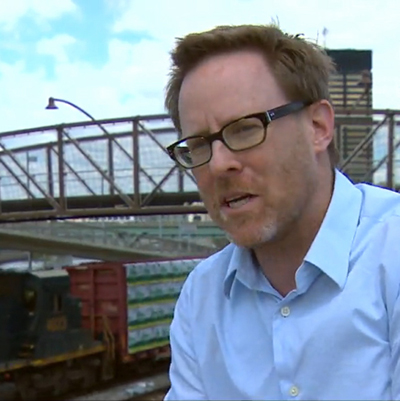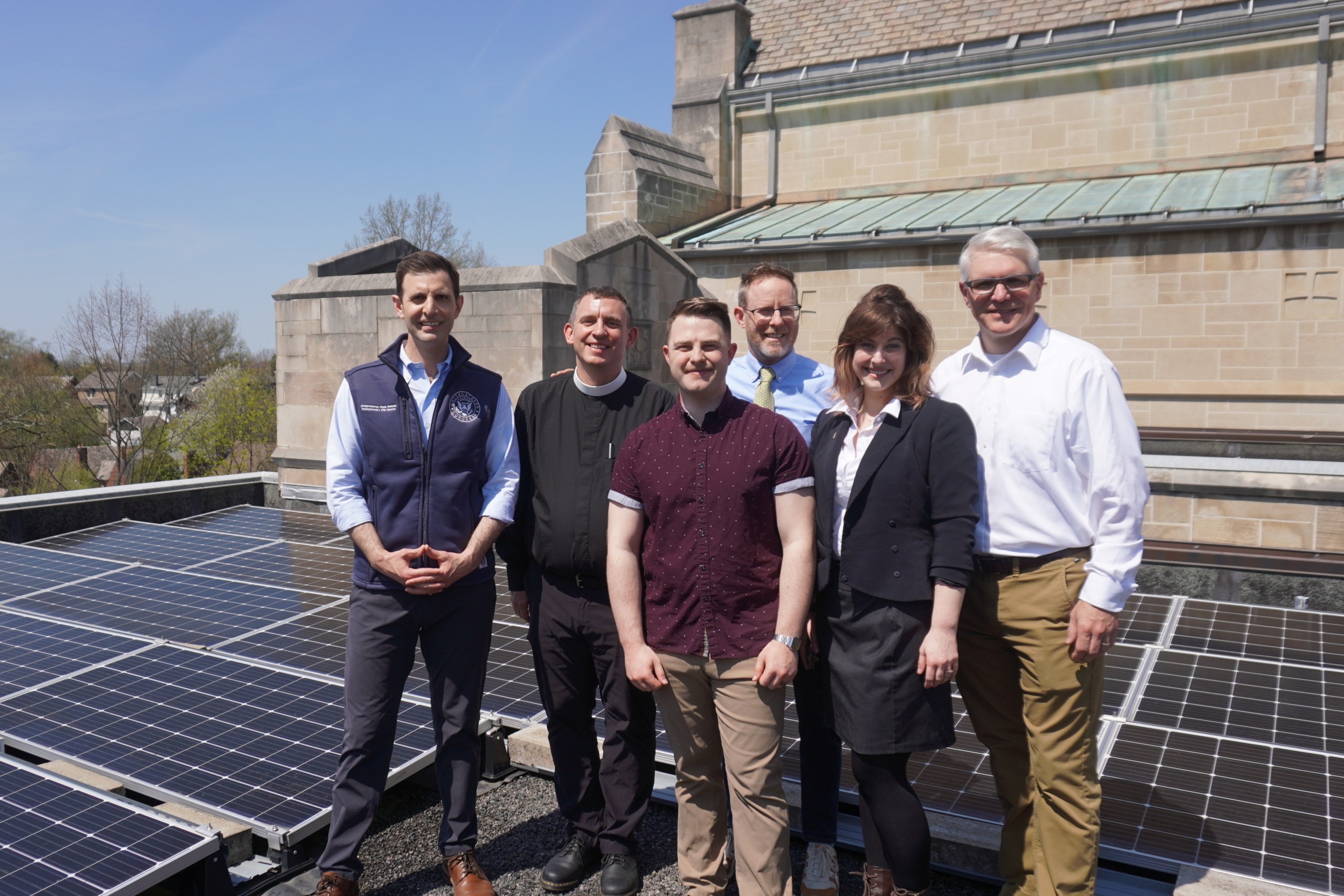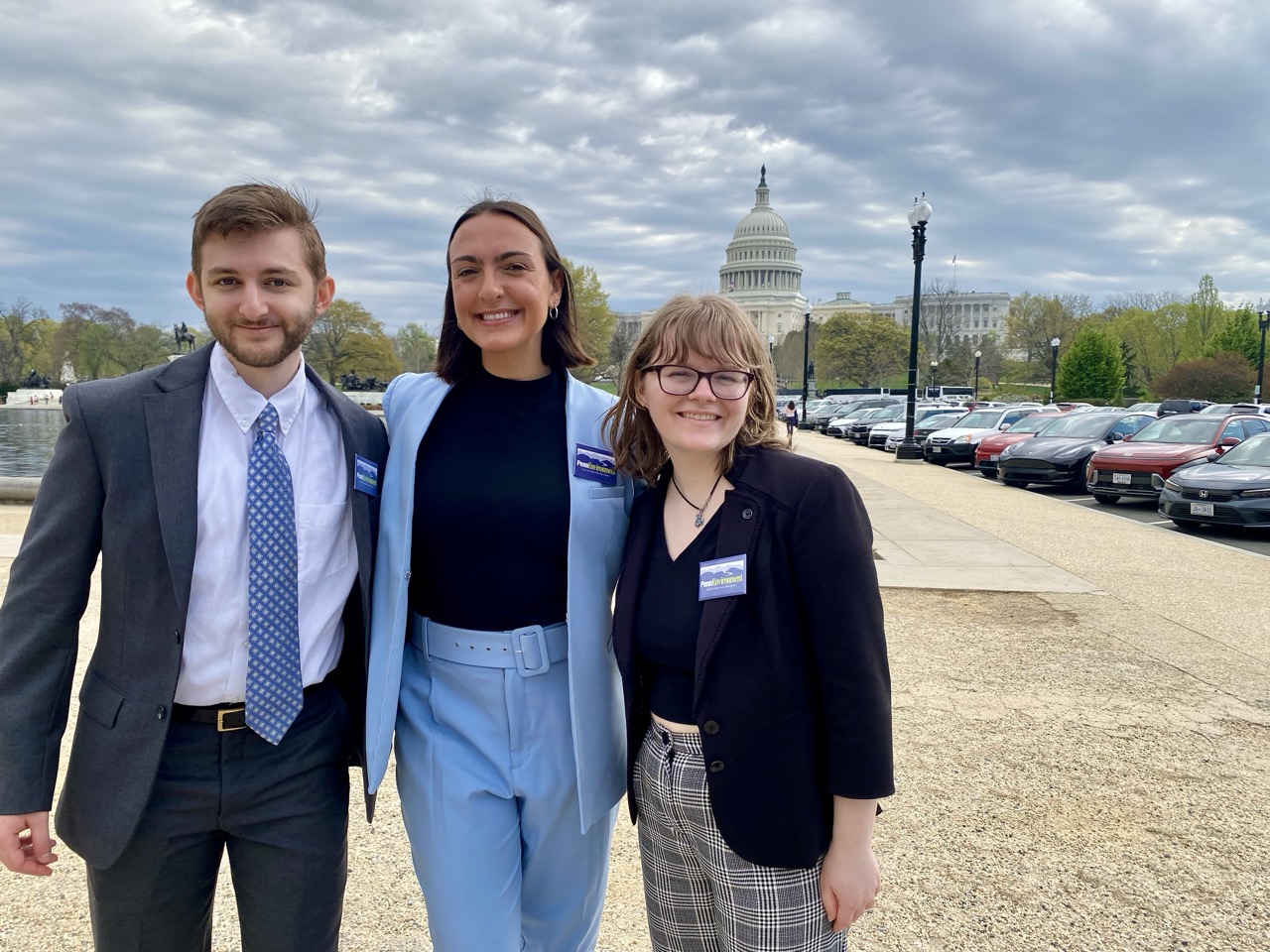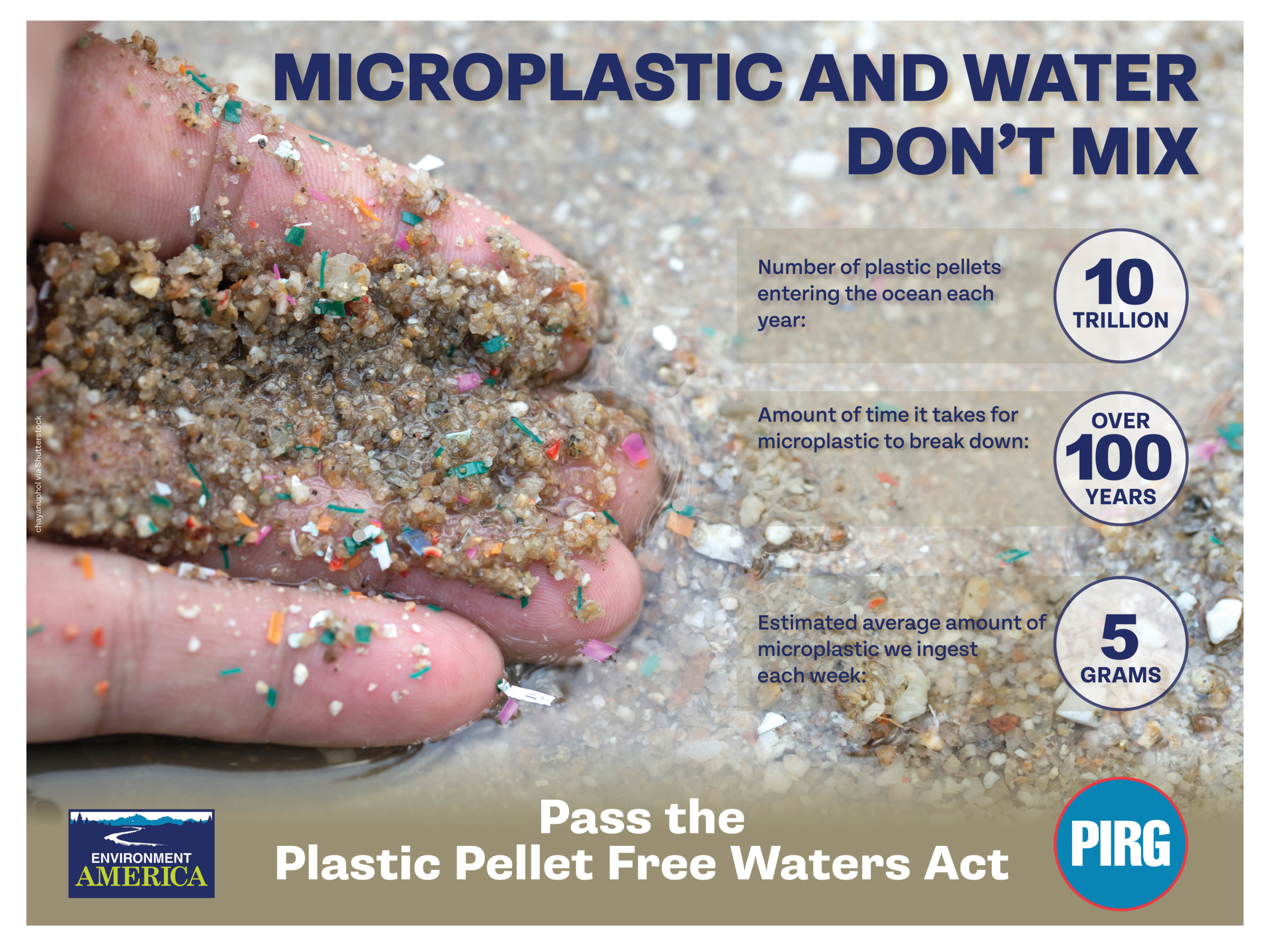
David Masur testifies at Senate Democratic Policy Committee Hearing
Testimony of PennEnvironment Executive Director David Masur at PA Senate Democratic Policy Committee Hearing, October 25, 2023

On Wednesday October 25th, PennEnvironment’s Executive Director David Masur testified at the PA State Senate Democratic Policy Committee Hearing on the topic of water, sewer, and stormwater infrastructure in the Commonwealth.
Here is a transcript of that testimony-
Good afternoon and thank you for inviting me to testify before the Pennsylvania state Senate Democratic Policy Committee on today’s important topic of water, sewer, and stormwater infrastructure in the Commonwealth. I want to particularly thank Policy Committee Chairwoman Muth and Senators Lindsey Williams and Collett for inviting me to testify today.
My name is David Masur, and I am the Executive Director for PennEnvironment. PennEnvironment is a statewide, citizen-based environmental advocacy organization. We work to promote clean air, clean water, and protect Pennsylvania’s incredible natural heritage.
Today I’d like to specifically focus my testimony on the environmental and health impacts taking place due to the lack of investment in water, sewer, and stormwater infrastructure in the Commonwealth. I’d like to start by talking about how longstanding disinvestment in our water systems leads to pollution. Then I’d like to talk about how that pollution effects our environment and health. Lastly, I’ll offer some policy solutions that can be implemented by Pennsylvania officials and agencies to remedy these challenges.
While the federal Clean Water Act stated that all of our waterways should be safe for fishing and swimming by 1983, we remain far from achieving that goal–even though we are 40 years past the targeted deadline. In fact, DEP estimates that one out of every three miles of streams in Pennsylvania are considered “impaired,” meaning that they are considered unsafe for swimming and fishing.
These miles of impaired waterways are not distributed equally across the Commonwealth. The Delaware Valley has some of the highest percentage of polluted waterways. 97 percent of streams in Philadelphia and 94 percent of streams in Delaware County are listed as impaired by PA-DEP. The counties of Montgomery, Chester, and Bucks are also among the top 10 list for their percentages of impaired streams. In southwestern Pennsylvania, Allegheny County has nearly 70 percent of streams impaired.
Maybe this shouldn’t be surprising when we look at the massive amounts of wastewater released into Pennsylvania’s waterways each year. Recent studies by the PennEnvironment Research & Policy Center showed that on average, Philadelphia’s wastewater system releases an average of 15 billion gallons of raw sewage mixed with polluted stormwater annually into local waterways, and that severe sewage overflow problems in Allegheny County are responsible for 9 billion gallons of sewage overflows being released into the Three Rivers and other regional waterways in southwestern Pennsylvania each year. This can have huge impacts on public health and our environment, as these systems create a harmful cocktail of the run-off pollution flowing off of our roads, sidewalks and lawns and into our sewer drains when it rains, combined with the bacteria-laden human waste and excrement from our homes (aka, “poop”), which then gets released into nearby waterways without being treated. This pollution can make people sick from contact with this sewage-laced water during water-related recreation activities.
This is exacerbated by short-sighted land use decisions, such as paving over natural areas so that stormwater can no longer infiltrate the soil, which instead becomes the runoff pollution overwhelming our sewer systems. To make matters worse, increased downpours and extreme weather events triggered by climate change is producing even more polluted stormwater. Yet Pennsylvania’s antiquated infrastructure is unable to deal with these changes.
The effects of these massive discharges of untreated sewage into our waterways has well-known negative effects on our environment and health.
Untreated sewage can contain bacteria, viruses, parasites, chemicals, heavy metals and pharmaceuticals. People may be sickened by sewage after swimming in polluted rivers or otherwise coming into contact with untreated wastewater. Bacteria, parasites and viruses in sewage can cause lung and intestinal infections; diarrhea, cramps, vomiting and loss of appetite; fever, headache and weakness; worsened allergies; and other illnesses.
Sewage pollution can also contribute to algal outbreaks that threaten our aquatic ecosystems and wildlife.
When raw sewage is released into a river, nutrient discharges of nitrogen and phosphorus can lead to the growth of algae, which deplete the water of oxygen as they die and decompose. Across Pennsylvania, we have seen algal outbreaks become more common with warm weather.
This pollution doesn’t only threaten our natural environment, it also hinders our ability to enjoy Pennsylvania’s great waterways for recreational activities such as swimming or boating.
Each year, there are an estimated 57 million cases of illness in the U.S. due to swimming in oceans, lakes, rivers and ponds, which can cause gastrointestinal illness as well as respiratory, ear and eye infections, and skin rash. Sadly, the vast majority of these illnesses go unreported.
Data from the PennEnvironment Research & Policy Center’s, “Safe for Swimming” report showed that for all beaches tested for fecal coliform along Pennsylvania’s Lake Erie beaches, every single one of them tested positive for potentially unsafe levels of fecal indicator bacteria on at least one testing day. Nearly 40% of our Lake Erie beaches tested positive for potentially unsafe levels of fecal bacteria indicators on 25% of the days tested or more.
This hinders recreational activity, hurts local economies, and puts the health of people, their pets, and wildlife at risk if they come into contact with these contaminated waterways.
Unfortunately, decades of disrepair and postponing infrastructure upgrades have left Pennsylvania’s water and sewer infrastructure in a dilapidated state. This often means more pollution being released into our rivers and streams, which in turn puts our environment and health at risk.
In order to address the environmental and public health challenges created by pollution from our antiquated sewer and wastewater systems, and run-off pollution that has become so common across the Commonwealth, PennEnvironment recommends the following policy solutions:
1. Increasing funding to prevent sewage and runoff pollution. While Pennsylvania has reaped the benefit of hundreds of millions of dollars for upgrading sewage infrastructure projects through the federal Bipartisan Infrastructure Law, the American Society of Civil Engineers estimates that Pennsylvania will need to invest $18.6 billion in water and wastewater infrastructure over the decade. For example: even at current funding levels, ALCOSAN and PWD acknowledge that their wastewater systems will still release billions of gallons of sewage overflows when their clean up plans are complete.
The General Assembly should work to dramatically increase funding for addressing sewage and runoff pollution for green infrastructure projects such as urban green spaces, green roofs, permeable pavement, and rain barrels, and increasing funding for stormwater infrastructure, and repairing, modernizing and expanding access to sewage systems. These projects are an excellent way to protect our environment AND promote job creation.
And we know that these investments work. The Philadelphia Water Department (PWD) estimates that its system repairs and green infrastructure projects reduced CSO volume by a cumulative total of 3 billion gallons by 2021.
2. More strategically use the funding we have. PennVEST has, ever since its creation in the late 1980’s, had policies that make it extremely difficult to fund many of the most important and most expensive stormwater projects that will make the largest pollution reductions for our waterways. Yet the U.S. EPA, which provides most of PennVEST’s funding, emphasizes that PennVEST should be interpreting the federal requirements to direct more (not less) money to these high need/high bang for the buck projects.
More can also be done to allow Pennsylvania’s large cities to participate in PennVEST’s loan program. For example, it’s estimated that if Philadelphia participated in PennVEST’s loan program instead of having to take out loans in the general borrowing market, it could save Philadelphia ratepayers up to $50 million each year. This could go towards critical infrastructure projects or halt rate increases for customers.
The state Senate should consider passing a resolution directing the LBFC (Legislative Budget and Finance Committee) and IFO to study PennVEST’s funding policies and ensure equitable and effective distribution of water infrastructure monies in accordance with U.S. EPA directives.
3. Stronger land use regulations and building codes. Land use regulations, zoning and building codes can determine how much stormwater flows off of new developments or redevelopment projects taking place across the Commonwealth. Studies show that focusing new growth in existing developed areas produces a lower volume of overflows than allowing uncontrolled growth to occur across a region as a whole. State officials should also require the use of green infrastructure best practices in all new development taking place in the Commonwealth.
This can be done by strengthening land use and zoning policies in the Commonwealth to limit the loss of forestlands when development occurs and to incentivize or require localities to focus development in already developed areas in order to reduce the amount of stormwater generated. And we certainly shouldn’t be incentivizing short-sighted, anti-environmental land use decisions by giving communities funds through PennVEST or other programs that are meant to reduce water pollution, just to see those jurisdictions turn around and make the water pollution problem worse by allowing (or promoting) poor land use decisions.
4. Setting stronger clean water standards to reduce pollution and protect our rivers. Of course, one of the fastest and best ways to protect our waterways from dilapidated, polluting infrastructure is just to set stronger protections for our waterways, which in turn will stimulate action by polluters to reduce their emissions. One clear example of this occurring right now is the fact that the Department of Environmental Protection is in the process for reviewing and proposing water quality standards for the Delaware River. Yet against the recommendations of U.S. EPA and local officials, the Department is pushing ahead with an exemption that allows the 27-mile stretch of the Delaware River between Philadelphia and the City of Chester to have weaker water quality protections and receive more pollution than those put into place for communities along the other 300 miles of the Delaware River. Residents of Philadelphia should get the same clean water protections for the Delaware River as residents of New Hope or the Poconos. And if DEP set stronger standards for this section of the river it would require polluters in the watershed to step up and in turn reduce their emissions. DEP should reverse course on this pollution exemption before they finalize this rule.
5. Preserve and restore riparian buffer zones and wetlands. Protecting wetlands and foresters stream and riverfronts reduce contamination by filtering out pollutants and are also a critical tool for absorbing floodwaters. Wetlands can hold 1-1.5 million gallons of floodwater per acre, helping with flood abatement and addressing extreme downpours. Legislation has currently proposed in the State House (HB1275) that will require protection of a minimum 100 foot riparian buffer along each side of a surface body of water, with a minimum 300 foot buffer for streams that have been designated as High Quality or Exceptional Value. The Senate should consider introducing a similar policy in this chamber.
Topics
Updates

Energy Conservation & Efficiency
Department of Energy finalizes water heater efficiency standards

Rep. Chris Deluzio Joins PennEnvironment for Solar Church Tour at St. Paul’s

PennEnvironment DC Lobby Visits

Lobby day secures bipartisan support for the Plastic Pellet Free Water Act

